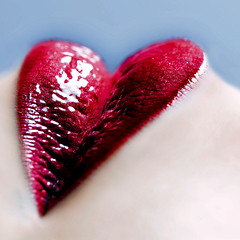It is recognized that the Egyptians of long ago wore lipstick. Since Cleopatra in 60 BC, women have applied the cosmetic to their lips. From existing depictions of the Ancient Greece we can see that they wore wigs, kohl, and henna made of plant dye from fucus algin and bromine (which was poisonous) on their lips. Queen Elizabeth, a trend setter and ruler, wore red on her lips. Not everyone loved the lipstick. In 1770, the British Parliament passed a law that said a woman wearing lipstick could be tried for witch craft. Queen Victoria of Britain said it was considered “impolite” to wear any make-up. In the 1800’s wearing red on your lips meant you were “fast” however, in the Roaring 20’s, the suffragists wore red as a symbol of their new found power. Hollywood starlets such as Gloria Swanson and Lana Turner helped increase the popularity of the lipstick. Elizabeth Arden opened a beauty parlor in the 1930’s that helped the average woman access make-up. And in1949, Hazel Bishop perfected a long lasting lipstick. Lipstick is colored by pigments from red to brown. Two of many dyes used are bromo acid and D & C red No. 21. A chemical called titanium oxide is added to give brightness. Cetyl alcohol is the ingredient which prevents lipstick from melting. Lipstick and lip gloss can come packaged in the tube or in a cylinder with an application swab. A lipstick that is frosted contains bismuth oxychloride for luster. A matte lipstick will last longer than a glossy one. A sheer lipstick contains more oil and less pigment color. The oils used can be petrolatum, castor oil, lanolin, cocoa butter, olive oil, or mineral oil. If the product contains a sealant, the lipstick will be long-lasting. A glimmer or sparkle is given to a lipstick by adding bits of mica or silica particles. Lipsticks production today no longer includes animal testing. People tend to think that rosy cheeks and lips are sensuous and a sign of good health.
To produce the cosmetic the mixture is first ground up. Then the wax and oils are added. The hot solution is poured into cold molds and then chilled. The lipsticks are then inserted into ornate twist tubes.
Did you know there is a plant called the lipstick plant? Its scientific name is Aeschynanthus pulcher and it is native to Malaysia. The vine cascades with red tubular flowers. Lipsticks come in browns, reds, purples, oranges, pinks, and even odd colors such as blues and purples.
Besides spending a lot of time with my webdesign agency FRUITWISH.nl i like to explore the web, and sometimes i write in this blog about common and un common things

